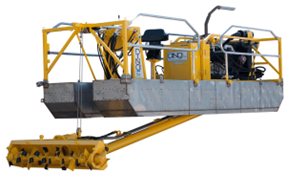A primary driving force behind the Herring River Restoration Project is that the water quality does not meet standards set by the Clean Water Act of 1972. The project's plan for dealing with this problem is to dilute the pollutants with restored tidal flow and wash them downstream into Wellfleet Harbor. Toxic chemicals will not be removed from the environment – they will simply be redistributed.
 |
 |
The EPA chose dredging to deal with this problem after 12 years of data collection and analysis. The agency supervised the project and coordinated the involvement of other federal and state agencies, including the U.S. Fish and Wildlife Service, the National Oceanic and Atmospheric Administration (NOAA), and the New York State Department of Environmental Conservation.
The Hudson River pollution solution suggests that dredging would be a relatively straightforward way to make the Herring River meet clean water standards. Dredging would have to be combined with ensuring uninhibited outflow of the Herring River into Cape Cod Bay. But this would be infinitely easier, less costly, and less disruptive than restoring tidal flows.
By the time water quality was identified as a Herring River problem in 1980 (or thereabouts), thought processes of the decision makers were focused on the dike, tidal flows, and salt marsh restoration and never expanded to the point where potential solutions such as dredging were seriously considered.
GE's accounting of the Hudson River PBC cleanup
Return to Editorial
Return to Alternatives
Return to Oysters
Top of page